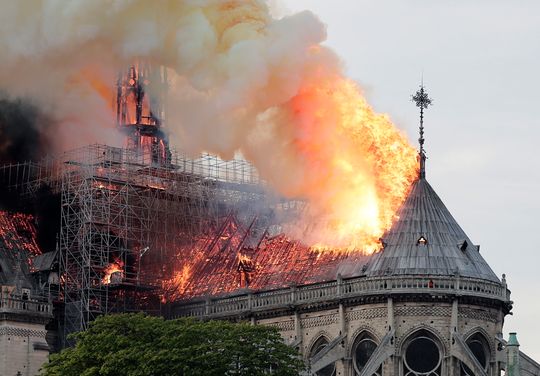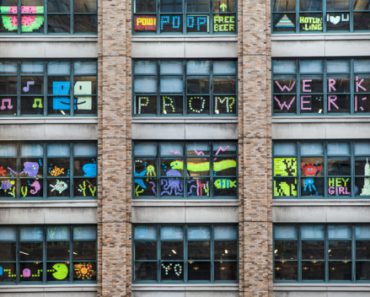
You do not have to believe in God to understand that Notre Dame is a holy place. Its exceptional composition, of stone, glass, oak, and lead, was assembled by human hands from 1163 to 1345, culminating in a feat of French Gothic architecture — a work now so monumental it resonates as nearly mythological.
A relic allegedly containing Christ’s crown has resided in Notre Dame for ages, brought to Paris by Louis IX via Constantinople in the 13th century. Construction had already been underway by then on the cathedral, modern implementations like flying buttresses altering its ascent — the external stonework supporting the weight of the ceiling, allowing for the walls to extend higher, leaving room for countless windows and the spilling forth of euphoric light. Pointed arches, rib vaults, piped masonry of ingenious design together created a sense of verticality, to render the sublime.
Experiencing Tragedy in Real Time
Like many people, I saw the fire on my phone’s screen in real time. Flames ripped through the 856-year-old medieval wooden roof known as “the forest,” quickly desecrating one of the most iconic structures in the world.
Photos soon flooded my timeline, from the Obamas to high school acquaintances: decades-old snapshots, a friend’s mother smiling beside a stone gargoyle; young Sasha and Malia lighting votives in the nave; the cathedral’s spire at night, extending heavenward from a miraculous illumined body, the whole form some divine lantern that had descended above the Seine — all but remembrances now, as angry plumes of smoke billowed from Notre Dame’s torched silhouette.
Some viewed those shared vacation photos as opportunistic plays at grandstanding; others considered that process a way, perhaps, to concretize their grief. Unlike the recent, horrific bombings throughout Sri Lanka’s churches, there were no casualties. And yet the fire seemed to prompt a global, collective mourning, for loss of the startling, existential sort. Notre Dame de Paris took 182 years to erect.
Generations of families had come and gone without ever seeing its completion. Situated in the heart of Paris, Notre Dame serves as a geographical beacon, a symbol of the city and also of its peoples’ endurance, having survived two world wars, the French Revolution, and the Hundred Years’ War. An estimated 13 million visitors tour Notre Dame every year, making this ruin tangible to so many near and far. But why did anyone feel connected to its destruction so intimately?
I couldn’t peel my eyes away from that 90-meter spire as it seethed in the heat, going brittle before cleaving in two. The sight made my stomach turn. We were witnessing something far more humbling: the sacrosanct and singular decimated in an instant — the puncturing of a communal naïveté, as if what we hold sacred could last forever.
Of its structure, all but the spire and the roof have been salvaged. Optimists remind us that the cathedral had been damaged before and restored. It will be rebuilt again. President Macron hopes to revive the cathedral within five years; others estimate the undertaking will, at a minimum, require a decade or two, meaning that it is likely some will not live to see its completion — a fact worthy alone of memorial, however that might be parsed.
The most sacred idea we may all have shared was that somehow the cathedral had not been bound by time. To witness its destruction reminds us of personal reckonings, how holy places can urge us to access some buried sense of wonderment — to stand in awe of an exquisite thing made to seem eternal.









